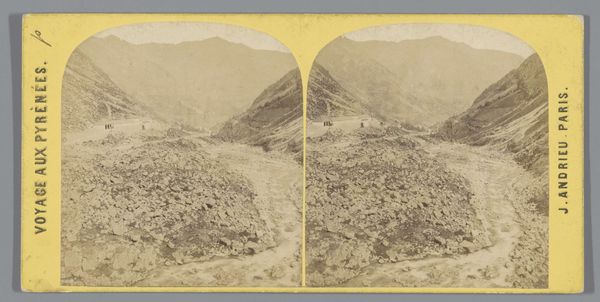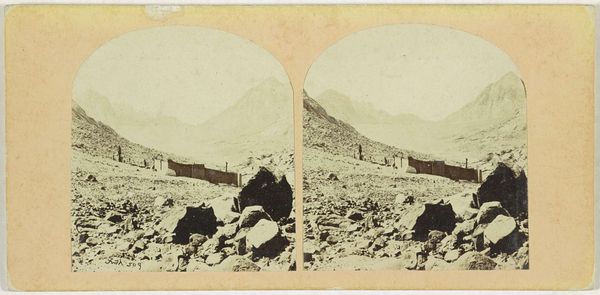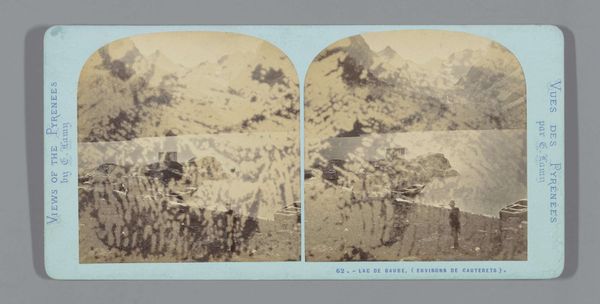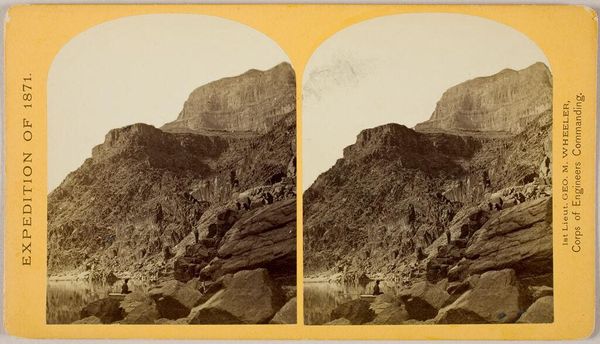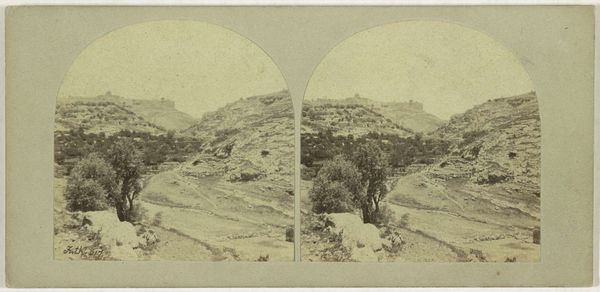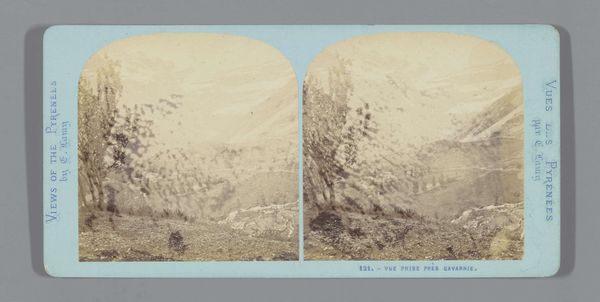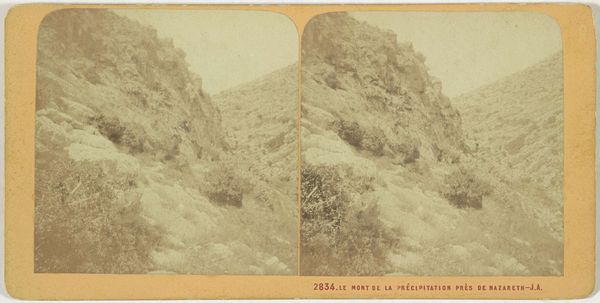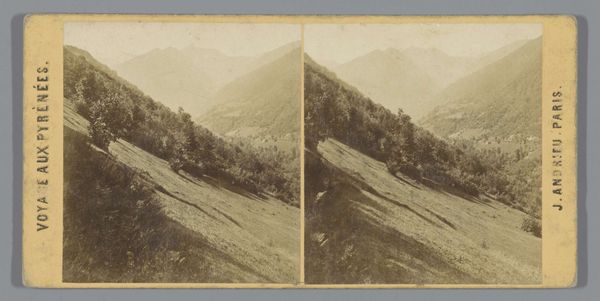
Ruïnes van een bisschoppelijk paleis in de Wadi Feiran vallei 1859 - 1861
0:00
0:00
francisfrith
Rijksmuseum
photography, albumen-print
#
landscape
#
photography
#
orientalism
#
albumen-print
Dimensions: height 85 mm, width 173 mm
Copyright: Rijks Museum: Open Domain
Editor: This is Francis Frith's "Ruins of a Bishop's Palace in the Wadi Feiran Valley," taken between 1859 and 1861. It’s an albumen print; it looks very detailed but also quite stark. What’s your perspective on this work? Curator: Frith’s choice of albumen print, given its laborious preparation, emphasizes the sheer effort involved in creating images in remote locations at that time. This medium connects the image to a whole system of labor and colonial exploitation involved in obtaining the raw materials required. Editor: That's fascinating! I hadn't thought about the materials themselves carrying that weight. The “Orient” was very fashionable during the period, but often idealized in paintings. Is Frith doing something different? Curator: Exactly. Frith's "Orientalist" landscapes were immensely popular, mass-produced and sold as exotic views. But through focusing on ruins – on decay – Frith acknowledges time and human intervention. How are these photographic prints consumed? And, crucially, who has access to them, and who is excluded? Editor: It seems to complicate the standard Orientalist narrative then. So, is he, perhaps unintentionally, highlighting the costs, both environmental and human, of the entire project of bringing these images to a Western audience? Curator: Precisely. Frith’s images become documents of a complex transaction, revealing how taste and labor intersected within the circuits of colonial power. Consider also the labor required to create the scene: those standing must make sure the photography machine operates effectively; there’s a chain of economic actions needed before that image can be put on paper for audiences far from the place where the photography was shot. Editor: That really gives me a lot to think about regarding the relationship between art, labor, and audience in that period! Curator: Indeed. By thinking about it this way we may consider these artworks to offer invaluable visual perspectives on colonial trade networks of 19th-century visual culture.
Comments
No comments
Be the first to comment and join the conversation on the ultimate creative platform.
